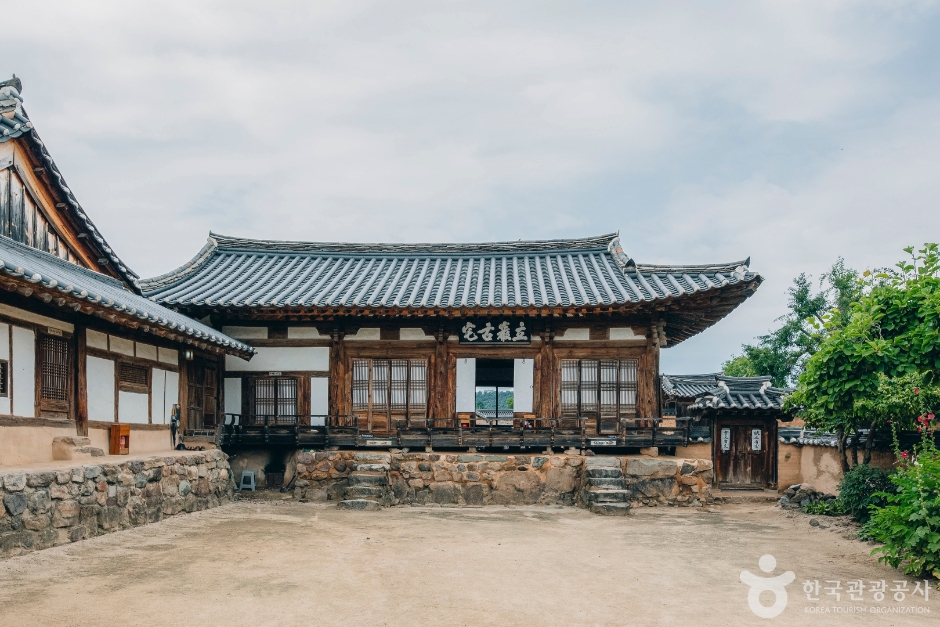Ga Gyeong Jae [Korea Quality] / 가경재 [한국관광 품질인증]
19.5Km 2023-04-13
69-5, Hahoenamchon-gil, Andong-si, Gyeongsangbuk-do
+82-54-855-8552
Gagyeongjae, or House with a Beautiful View, is a place with a thatched roof and an unhindered view. Guests can enjoy the view of natural environment over the window, with cool breeze freely flowing in the rooms. There are five rooms in total including Anchae Sangbang, Sarangchae Upper Room and Lower Room, Ondol Red Clay Lower Room, and Door Room. Guests in Anchae can use the central porch, whereas guests in Sarangchae can take advantage of the central floor as well. Ondol Red Clay Room is popular; it is heated by the owner himself through the traditional fireplace outside the room. The room, however, requires reservation at least 2 days in advance.
Air conditioners were recently installed in the hanok. Additional fees are separately charged in summer, but it is just great to enjoy air conditioning in a hanok. Note that reservation and inquiry over the phone is faster and more convenient than that on the website. There are many restaurants and places to experience in Hahoe Folk Village. It is a nice place to enjoy many things and just relax.
Yangjindang (하회 양진당)
19.5Km 2025-07-01
68, Hahoejongga-gil, Andong-si, Gyeongsangbuk-do
“Andonog Hahoe Yangjindang,” located in the Hahoe Folk Village, is Treasure No 306 and the residence of a family with the surname Pungsan Ryu. A tablet read Ipam Antique House, named after Ipam Ryu Jung Yeong (1515 - 1573), is hung on the entrance. Yangjindang is named after the nickname of Ryu Yeong (1687 - 1761), the sixth generation of Gyeongam Ryu Un Ryong, son of Ipam. The name means “nourishing well one's own nature.” The Hanok stands over the entrance, with a well-polished floor that is grand yet friendly. One of the characteristics of the house is that it includes Sarangcha or detached building, which reflects the architecture from the Goryeo period, and Anchae or main building in the architecture style from the Joseon period.
It is expected that such co-existence was made possible because of the repairs done after Imjin War. How fortiunate that the antique house has been preserved until now! The well-tended garden shows the commitment of the descendants to maintaining the space. Rooms are rather simple compared to the grand exterior of the house. Traditional mother-of-pearl furniture, tableware in the cupboard, randomly ceramics placed draw attention. The house resembles a small folk museum. Why not enjoy some traditional folk games during your stay? There is a variety of play tools such as yut, tuho, jegi, tops, and kites. Experience programs such as gayangju brewing, rice cake and traditional dessert making, and flower tea are conducted by the first daughter-in-law of the house, depending on the season.
![Ga Gyeong Jae [Korea Quality] / 가경재 [한국관광 품질인증]](http://tong.visitkorea.or.kr/cms/resource/00/2626200_image2_1.jpg)

 Español
Español
 한국어
한국어 English
English 日本語
日本語 中文(简体)
中文(简体) Deutsch
Deutsch Français
Français Русский
Русский